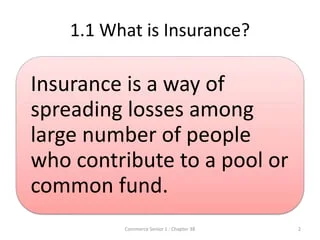Things about Pacific Prime
Things about Pacific Prime
Blog Article
Pacific Prime for Beginners
Table of ContentsThe Greatest Guide To Pacific PrimeNot known Incorrect Statements About Pacific Prime Not known Factual Statements About Pacific Prime The Pacific Prime PDFsPacific Prime Can Be Fun For Everyone

This is because the information were gathered for a duration of solid financial efficiency. Of the estimated 42 million people that were without insurance, almost regarding 420,000 (concerning 1 percent) were under 65 years of age, the age at which most Americans come to be eligible for Medicare; 32 million were adults between ages 18 and 65, around 19 percent of all adults in this age; and 10 million were youngsters under 18 years of age, about 13.9 percent of all youngsters (Mills, 2000).
These estimates of the number of persons uninsured are produced from the yearly March Supplement to the Existing Population Survey (CPS), performed by the Census Bureau. Unless otherwise noted, national quotes of individuals without medical insurance and proportions of the populace with different type of protection are based upon the CPS, one of the most widely utilized source of estimates of insurance policy protection and uninsurance rates.
All About Pacific Prime

Still, the CPS is specifically beneficial since it produces yearly quotes fairly rapidly, reporting the previous year's insurance protection estimates each September, and because it is the basis for a constant set of quotes for more than two decades, enabling evaluation of patterns in protection with time. For these factors, in addition to the extensive use the CPS in other research studies of insurance protection that are provided in this report, we rely upon CPS quotes, with restrictions noted.

The price quote of the number of without insurance people increases when a population's insurance coverage condition is tracked for several years. Over a three-year period starting early in 1993, 72 million people, 29 percent of the U.S. https://moz.com/community/q/user/pacificpr1me. population, were without insurance coverage for at the very least one month. Within a solitary year (1994 ), 53 million people experienced a minimum of a month without protection (Bennefield, 1998a)
Six out of every 10 without insurance adults are themselves used. Although working does boost the chance that and one's relative will have insurance policy, it is not a guarantee. Also participants of family members with 2 full-time breadwinner have almost a one-in-ten chance of being uninsured (9.1 percent uninsured price) (Hoffman and Pohl, 2000).
The Pacific Prime PDFs
New immigrants make up a considerable percentage of individuals without health insurance coverage. One analysis has associated a substantial section of the current growth in the dimension of the united state without insurance populace to immigrants that got here in the country between 1994 and 1998 (Camarota and Edwards, 2000). Recent immigrants (those that came to the USA within the past 4 years) do have a high price of being without insurance get more (46 percent), yet they and their youngsters make up simply 6 percent of those without insurance nationally (Holahan et al., 2001).
The relationship between medical insurance and accessibility to care is well developed, as documented later in this chapter. The relationship in between health and wellness insurance coverage and health and wellness results is neither direct neither easy, a substantial clinical and wellness services research literary works links health insurance coverage to better access to care, better high quality, and improved individual and population wellness condition.
Degrees of analysis for examining the results of uninsurance. This discussion of wellness insurance policy coverage concentrates mainly on the united state populace under age 65 because essentially all Americans 65 and older have Medicare or other public insurance coverage. In addition, it focuses particularly on those without any kind of wellness insurance for any type of length of time.
The smart Trick of Pacific Prime That Nobody is Talking About
The troubles dealt with by the underinsured are in some areas comparable to those encountered by the uninsured, although they are generally much less severe. Wellness insurance coverage, however, is neither necessary neither sufficient to get access to clinical services. The independent and straight effect of health and wellness insurance policy coverage on access to health and wellness services is well developed.
Others will certainly get the healthcare they need also without wellness insurance coverage, by spending for it out of pocket or seeking it from service providers that provide treatment free or at very subsidized rates. For still others, medical insurance alone does not ensure receipt of treatment as a result of other nonfinancial obstacles, such as an absence of health care providers in their area, limited accessibility to transport, illiteracy, or linguistic and cultural distinctions.
The smart Trick of Pacific Prime That Nobody is Talking About
Official study concerning uninsured populations in the United States dates to the late 1920s and early 1930s when the Committee on the Cost of Healthcare created a series of records about financing doctor workplace gos to and hospital stays. This issue ended up being significant as the varieties of medically indigent climbed up throughout the Great Clinical depression.
Report this page